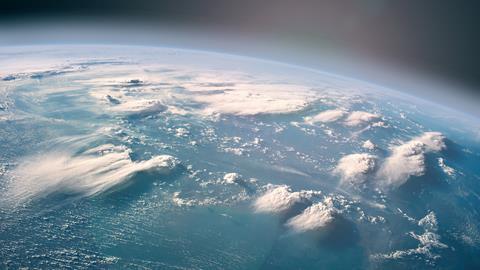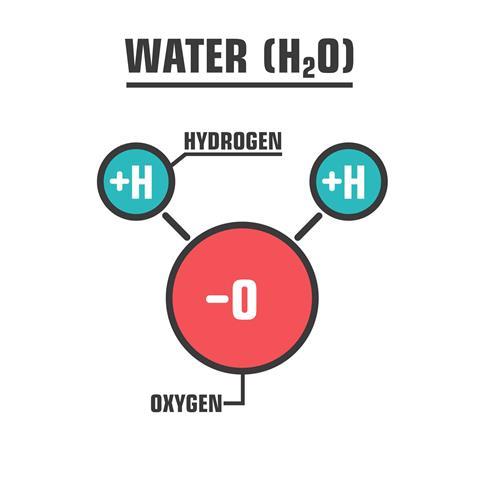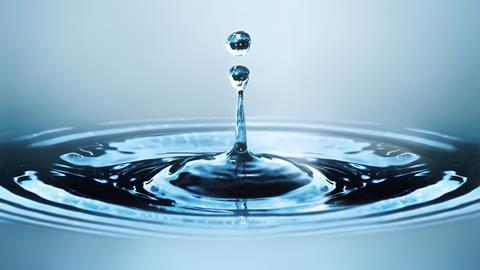Meera Senthilingam
Welcome to a new series of Chemistry in its element, where we bring you the tales of discovery and experimentation behind our chemical compounds. And what better compound to start with than the one that brings us life. Explaining more, here's Brian Clegg.
Brian Clegg
If you look at Earth from space, its defining feature is water. Our planet is blue with the stuff. A deceptively simple compound, water is composed of two atoms of hydrogen to one of oxygen - making it technically dihydrogen monoxide or oxygen hydride, though these are terms only likely to be used to emphasize geeky credentials.
It would be meaningless to speak of a discoverer of water - we've always been aware of it - but various scientists lay claim to uncovering water's composition. Laviosier realised that hydrogen and oxygen could be made from water in the 1770s, but the explicit discovery of its makeup is down to either James Watt, who suggested its composition in 1783, or Henry Cavendish who recombined oxygen and hydrogen in 1781, but didn't publicise it until a year after Watt's discovery. We do know, though, that it was in 1826 that J?ns Jakob Berzelius fixed the atomic weights of hydrogen and oxygen, and came up with the familiar H2O designation.

Over 70 per cent of the Earth's surface is water - in round figures there are 1.4 billion cubic kilometres. This is such a huge amount, it's difficult to visualise. A single cubic kilometre is a trillion kgs of water. That's a nice round number because water had a starring role in the establishment of metric units. A gram was originally defined as the weight of a cubic centimetre of water.
Water has huge significance for biology, so much so that the when we search the solar system for likely signs for life, we first look for water. Bacterial life has been found at the extremes of heat, cold and airlessness that our planet can serve up. There is no known life without water.
Underlying water's importance is a unique collection of properties. It's the only compound that exists as solid, liquid and gas at the typical temperatures of the Earth's surface. And as a molecule it has some surprising characteristics - without one of these, its boiling point would be below -70 degrees Celsius. There would be no liquid water on Earth, which means no life. But thanks to this special property the water molecule shares with a few others, it boils at the familiar 100 Celsius.
The property in question is hydrogen bonding, an electromagnetic attraction between a hydrogen atom and another atom like oxygen, nitrogen or fluorine. When hydrogen forms a covalent bond with one of these elements, the hydrogen has a relative positive charge and the oxygen (in the case of water) a degree of negative charge. The hydrogen in one water molecule is attracted to the oxygen in another. The result of this bonding is that it's harder to separate the molecules into a gas. The bond has to be overcome, pushing up the boiling point.
Hydrogen bonding is also responsible for another of water's unusual properties. Most substances occupy less volume as a solid than they do as liquid. Solid water - ice as we tend to call it - has a higher volume, which is why it's not recommended to freeze a bottle full of water, and why ice floats on a pond. It's often said that this is a unique property of water. It's not - acetic acid and silicon, for example, are both less dense as a solid than as a liquid - but it is unusual.

The shape of the standard crystal form of water, a six-sided lattice, won't fit with the way the hydrogen bonds pull the hydrogen of one water molecule towards the oxygen of another. To slot into the structure, these bonds have to stretch and twist, pulling water molecules further apart than they are at water's most dense form (at around 4 degrees Celsius).
The relative negative charge on the oxygen arises from the covalent bonds connecting it to hydrogen. The remaining four electrons in the oxygen's outer shell stay away from bonding electrons, so there's a tendency to have a negative charge on the opposite side. Similarly, the hydrogen's only electron is in the bond, so it has no electrons opposite, leaving it relatively positive. Without this, you'd expect the four pairs of electrons around the oxygen to form a tetrahedron (a three-sided pyramid), with the covalent bonds separated by 109.5 degrees. But the electrons in the bonds are pulled away from the oxygen, weakening their repulsive effect, so the actual angle is around 104.5 degrees.
Water is, of course, transparent but does have a slight blue colouration due to scattering of light (the same reason the sky is blue), not obvious except when there's a large amount of water we can see through - for example in glacier ice.
One of the reasons water is so important for life is that it is a great solvent thanks to the polarity of the molecule, dissolving many other materials and acting as a transport for them in living cells. But this isn't the only way that water supports life. It takes part in many of the chemical reactions necessary for the metabolic processes of the body.

With water so important to life, and so common on Earth, it might seem odd that we often talk about water shortages. Divide the amount of water in the world by the number of people and we end up with 0.2 cubic kilometres each. Around 212 billion litres for everyone. And much of the water we consume is soon returned to the supply. So how can there be a shortage? What is usually represented as a water shortage is actually an energy problem. There's plenty of water, but it's in the wrong place, and is often contaminated - for example with salt in the sea. Fixing this is entirely possible, provided you have the energy to make it happen.
We aren't going to run out of water. And that's just as well. This wonderful compound, with its unique properties, remains the true staff of life.
Meera Senthilingam
In deed, and although abundant it is to be used widely and not taken for granted. That was Brian Clegg with the unique and essential chemistry of water. Now next week, a compound that gets a bit too much bad press.
Hayley Birch
Sometime in the 1990s, the pharmaceutical companies started waging war against cholesterol. By 2001, millions of people were taking statins and the cholesterol-lowering drug Lipitor had become the biggest-selling pharmaceutical ever made. Scientists have even suggested the drugs be handed out with Big Mac meals to counteract the effects of cholesterol on our arteries.
But cholesterol isn't all bad. Besides being crucial to maintaining the integrity of the membranes that hold cells together, it's needed in bile salts, which digest our food, and in making sex hormones. Our bodies churn out around a gram a day, and that's without any help from McDonald's. Quite literally, we wouldn't be here if it wasn't for cholesterol.
Meera Senthilingam
And join Hayley Birch to find out how good and bad cholesterol is for our bodies and the chemistry behind this in next week's Chemistry in its element. Until then,













No comments yet